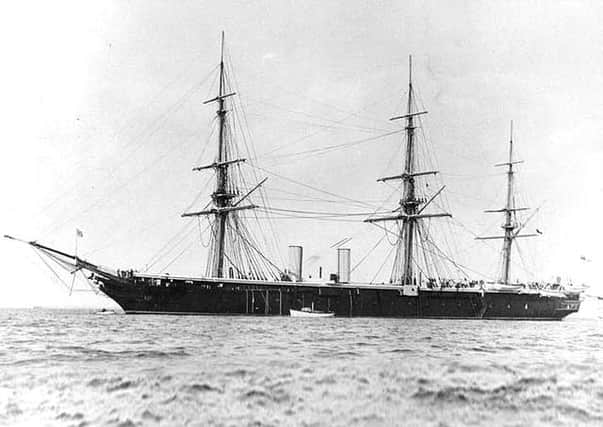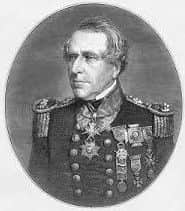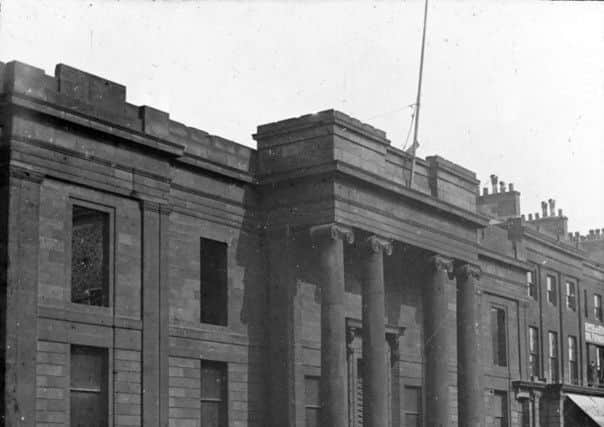30,000 Sunderland people flocked to see the Channel Fleet - but was it all a big PR stunt?


Sunderland was visited in 1874, 1895 and 1903 - on each occasion during the month of September.
However, the first-ever visit of the Fleet to the town took place in July 1863 and what an occasion turned out to be.
Advertisement
Hide AdAdvertisement
Hide Ad

Its success, and the reason behind it, is the subject of this feature, courtesy of the Sunderland Antiquarian Society.
The population of Sunderland was between 80,000 and 90,000, the town was leading a comfortable, if quiet, existence, and it was felt that at visit from the Fleet would be beneficial and stimulating.
Some suspected the purpose was to gain diplomatic naval publicity.
The Mayor, Alderman James Hartley, sent out an invitation to the Admiralty.
Advertisement
Hide AdAdvertisement
Hide Ad

This resulted in the Channel Fleet coming to Sunderland and remaining off the port for about a week.
The Fleet was led by its Commander-in-chief, Admiral Sir Sidney Dacres, and the visit was a real gala event.
In the words of the special supplement published by the Sunderland Times on July 27, 1863: “Never on any former occasion were there so many thousands of persons crowding the docks and piers, with their anxiety to see the Fleet far exceeding anything that could have been anticipated.”
Steamers packed with Wearsiders left every few minutes in order to land their passengers on different ships, before returning quickly to pick up even more.
Advertisement
Hide AdAdvertisement
Hide Ad

It was estimated that in two days, 30,000 people visited vessels.
The Warrior alone had more than 6,000 and at one time there were 1,500 people on the ship.
The Sunderland Times declared: “The steamers made money like hay, and up to nine o’clock in the evening were carrying passengers.”
On shore, many ships’ officers strolled about the streets, and four went down Wearmouth Colliery.
Advertisement
Hide AdAdvertisement
Hide Ad

The anxiety to see the Fleet spread into the county, and there were thousands of visitors from colliery districts. One special train bringing a Lodge of Foresters and around 1,000 of their friends from Spennymoor.
Most trains were of enormous length with one coming from Newcastle having two engines and 40 carriages.
Every steamer that went out to the Fleet was heavily laden and many so overcrowded there were fears they may capsize. Fortunately there were no serious casualties, although one or two people fell overboard and one seaman from The Edgar had to jump into the sea to rescue a man.
Sunderland entertained the Fleet well. A ball at the Athenaeum for Admiral Dacres and 150 officers was attended by 200 ladies and gentlemen of the town.
Advertisement
Hide AdAdvertisement
Hide AdOccupying a prominent space in the decorations of the ballroom was a picture of Jack Crawford nailing the colours to the mast.
The ball was led off by Sir Hedworth Williamson and Mrs W.E. Wilcox of Whitburn, and the dances that evening included the quadrille, gallop, lancers, polka and waltz.
The refreshments were provided by Mr Bewick of the Crown and Septre Hotel.
The celebrations that week also included a dinner given by the town to Admiral and the officers again at The Athenaeum. The elite attended, toasts were in plenty and speeches long but appreciated.
Advertisement
Hide AdAdvertisement
Hide AdSongs were sung by a Miss Josephs and included Ever of Thee.
Messrs Ferry and Whitehead contributed a duet entitled Army and Navy and Rule Britannia was sung with gusto.
The Admiral proposed the health of the Mayor, Corporation and inhabitants of Sunderland.
He stated that he fully expected that people brought up in a maritime profession and connected with the sea would meet them with kindness, but he could not express the feeling of kindness which they had received and would never forget.
Advertisement
Hide AdAdvertisement
Hide AdThe Mayor replied that the Fleet coming to Sunderland would be a great benefit to the town. He believed this would be reciprocal and the good feeling displayed would give many a good servant to the Queen.
It would appear that the visit WAS carried out in order to recruit Wearside lads into the navy.